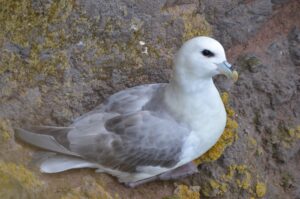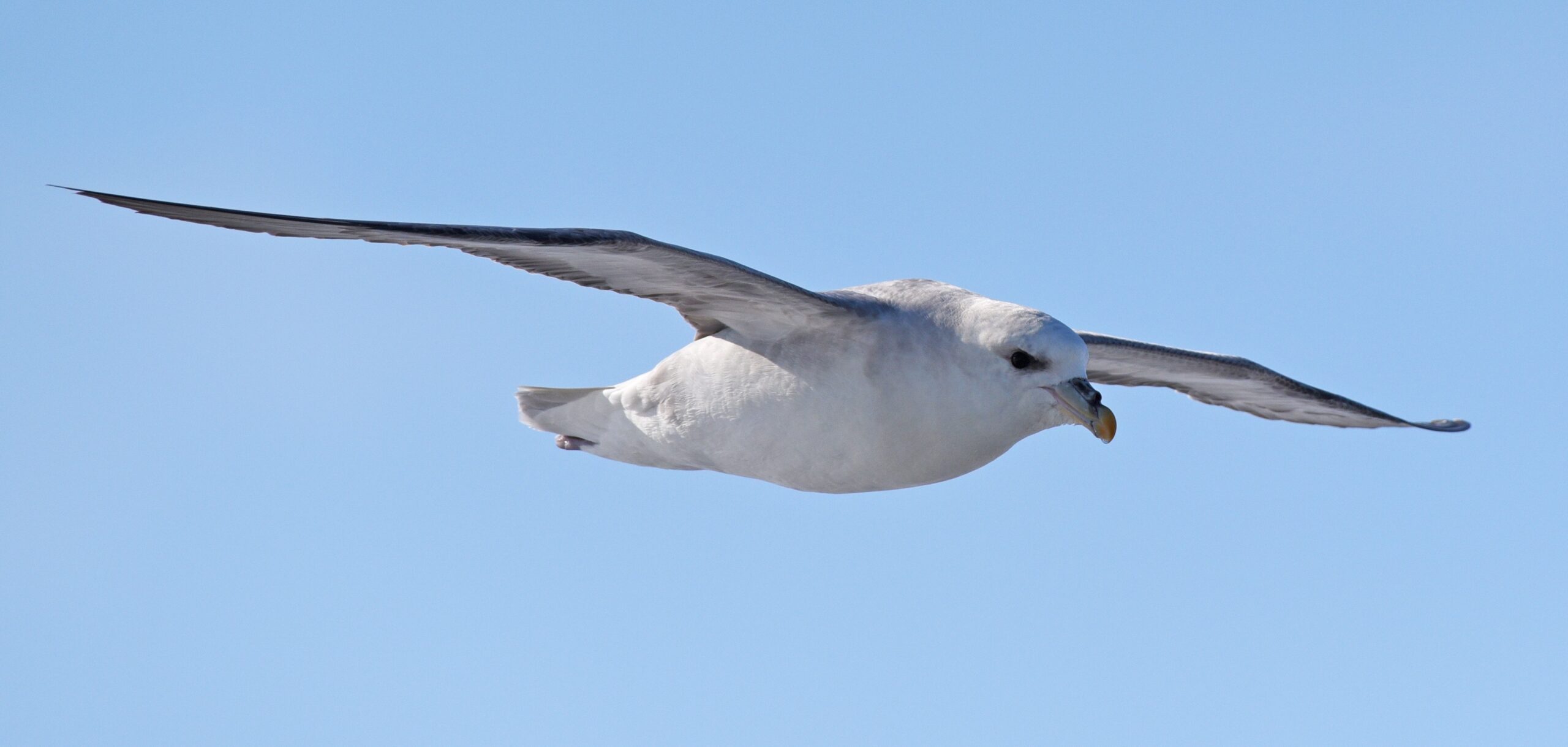The oceans are full of plastics. This is concerning, in part due to the dangerous substances that may be emitted from the plastic. Wageningen Marine Research biologists published a study on these substances in the stomachs of the northern fulmar.
Stomach oil
Northern fulmars produce a substantial amount of stomach oil in their glandular stomachs. The oily substance that the birds extract from food serves as fuel. Plastic additives, such as plasticisers and flame retardants, dissolve in this oil. The northern fulmar consumes a lot of plastic. It thus provides a useful model to demonstrate the leaching of dangerous substances from plastics.
Susanne Kühn, lead author of the study, and her colleagues tested this by adding a mix of ground plastics to the fulmar’s stomach oil. The oil was collected from birds caught on the Faroe Islands; the plastic was collected on the beaches of Texel. Over a period of ninety days, the leaching of a large number of materials from the plastics was monitored. It is estimated that the plastic remains in the birds’ innards for several months.
Even plastics that remain inside the bird for a short while can cause damage
Susanne Kühn, Wageningen Marine Research
For some materials, the leaching begins immediately, Kühn states. ‘The most significant developments take place within the first two weeks. That is relevant information; it shows that even plastics that remain inside the bird for a short while can cause damage.’ Moreover, the damage differs considerably depending on the type of material. Of the fifteen identified materials, five showed a strong dissipation into the stomach oil.
Carcinogenic

It is yet unclear whether the leaking reached levels that are harmful to the bird, Kühn: ‘We measure relative changes in the levels of materials. We are unable to deduct absolute concentrations.’ Nevertheless, the results are worrying. ‘Some of the materials that find their way into the stomach oil are carcinogenic or disturb the hormonal balance.’
An added issue is the duration of the exposure. ‘Research shows that over ninety per cent of the northern fulmars have plastics in their stomach. These birds are continuously exposed to these materials. The concerning issue is that there are so many different materials, with consequences we are not yet aware of.’

 Photo: Shutterstock
Photo: Shutterstock